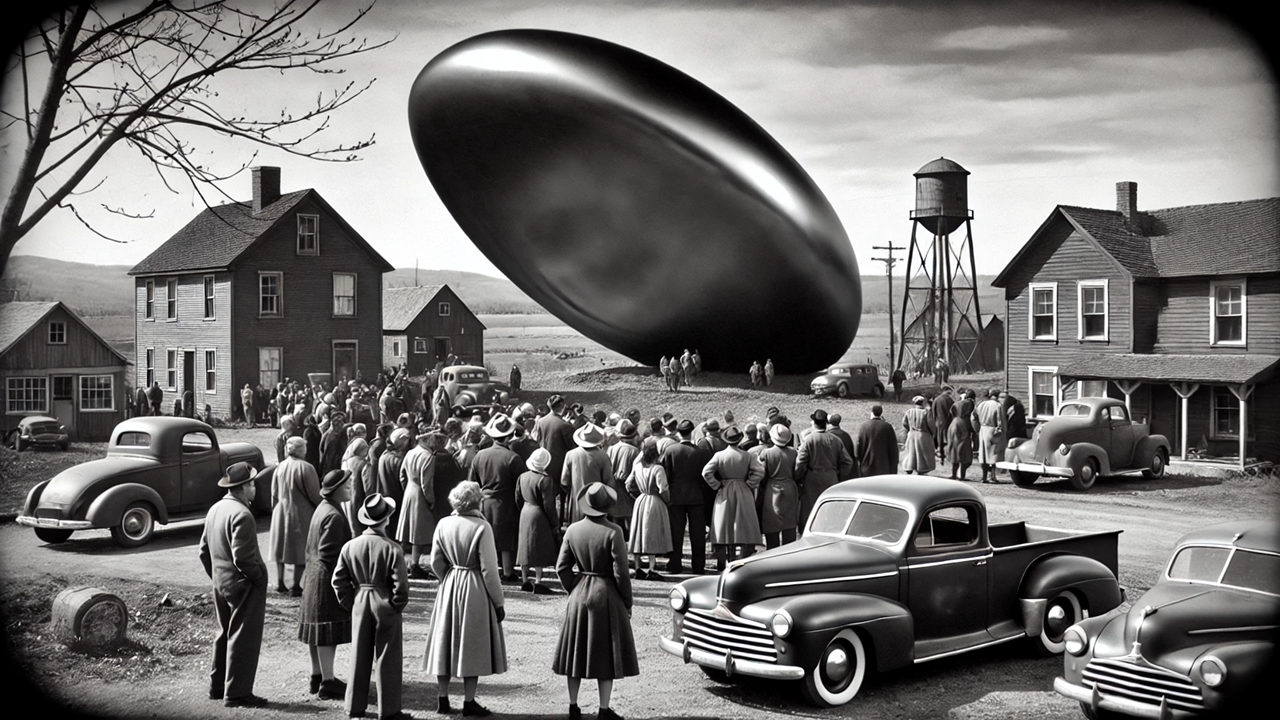Imagine, if you will, a small backwater town into which one day a large shiny object falls from the sky and lands dead center on the main street of the town’s modest commercial center.
The object is egg shaped, suggesting its potential for something to hatch from it, and appears to be metallic, but of a kind not immediately recognizable. It has landed lying on its side, motionless.
In short order, the town’s citizenry begins to gather around the object, gawking at it and speculating as to what it might be. Some, particularly the town’s elders, look at it and feel dread and foreboding. Others are elated and excited over what it might hatch.
As news of the object spreads, the crowd of gawkers expands, filling this once-sleepy town with the curious from near and far. Along with the gawkers come self-proclaimed experts to study the object, from fields such as shiny-object development and unusual-egg incubation.
Metallurgists declare the object’s shell to be similar to but not exactly like anything previously known. Researchers with large x-ray machines conclude in frustration that the object is an impenetrable black box.
As the crowds of gawkers continue to grow and the scientists continue to poke and prod at the mysterious object, opportunistic entrepreneurs arrive and set up stands around the periphery of the main street. Some of the better-funded entrepreneurs take over the downtown’s store fronts, displacing established businesses that had served the town for years.
Megaphones in hand, these entrepreneurs promise they can use the shiny object to change people’s lives for the better, to make them more prosperous and to give them more time to pursue leisure and be with their families. Many claim to be uniquely equipped to develop the shiny object, having spent years developing other shiny objects and even acquiring shiny objects developed by others.
But even as these entrepreneurs set up their stands, so too do the fundamentalist preachers and doomsayers. They mount soapboxes to warn that the shiny object will bring nothing but calamity, uprooting the lives and livelihoods that had hitherto defined the town’s way of life – and that had made some of the town’s elders quite comfortable financially.
By the time the government officials arrive, the whole scene around the shiny object has taken on a raucous carnival atmosphere of onlookers and hawkers and preachers and assorted other sideshows. The officials come armed with rolls of yellow police tape, hoping to cordon off the shiny object to allow them time to form panels and commissions to debate what to do about it. But every attempt they make to fence off the object only results in the crowds protesting and the hawkers pushing back through.
All the while, the shiny object just sits there, its glossy exterior reflecting the faces of the gawkers surrounding it. It does not move. It does not hatch. The town into which it had fallen becomes a bigger town and then a small city, thanks to the armies of entrepreneurs who continue to arrive there with their promises of products and their workforces of salespeople and marketers to push those promises to the ever-expanding crowds of the curious who keep arriving to gawk at this object and wonder in fear and awe at its potential.
Did I mention, by the way, the name of this town? It is, you may have guessed, Legaltechia.
* * *
Awkward as my analogy admittedly is, it was the image I came away with as I flew home this week from ILTACON, the annual convention of the International Legal Technology Association, held this year in Nashville.
This was the largest ILTACON ever by several measures. It boasted the largest number of registrants ever, the largest number of full-week registrants ever, the largest number of exhibitors ever, and the most countries represented ever.
On top of that, it was, at least to my memory, the most energized ILTACON ever. Not only did the legal tech community descend on Nashville in throngs, but they came seemingly bursting with a new (or renewed) sense of excitement about the future of legal tech and the future of the legal industry.
And there, dead in the middle of all this energy and activity, at the center of everyone’s attention, was that big shiny object we call generative AI.
They came by the thousands to wonder at it. They came brimming with curiosity about it. They came to hear the promises of products built on top of it. They came to allay their fears of how it might upend their lives.
They came, in short, full of anticipation.
Yet the shiny object, it seemed, just sat there, as if waiting to hatch, as if waiting to reveal something from deep inside itself that we have never before seen.
Count me among the gawkers and the wonderers. I leave Nashville no less excited about this shiny object, no less curious – no less, I will admit, enthusiastic – about what it will deliver. But I am still, for the most part, still waiting, only anticipating what has yet to materialize.
 Robert Ambrogi Blog
Robert Ambrogi Blog